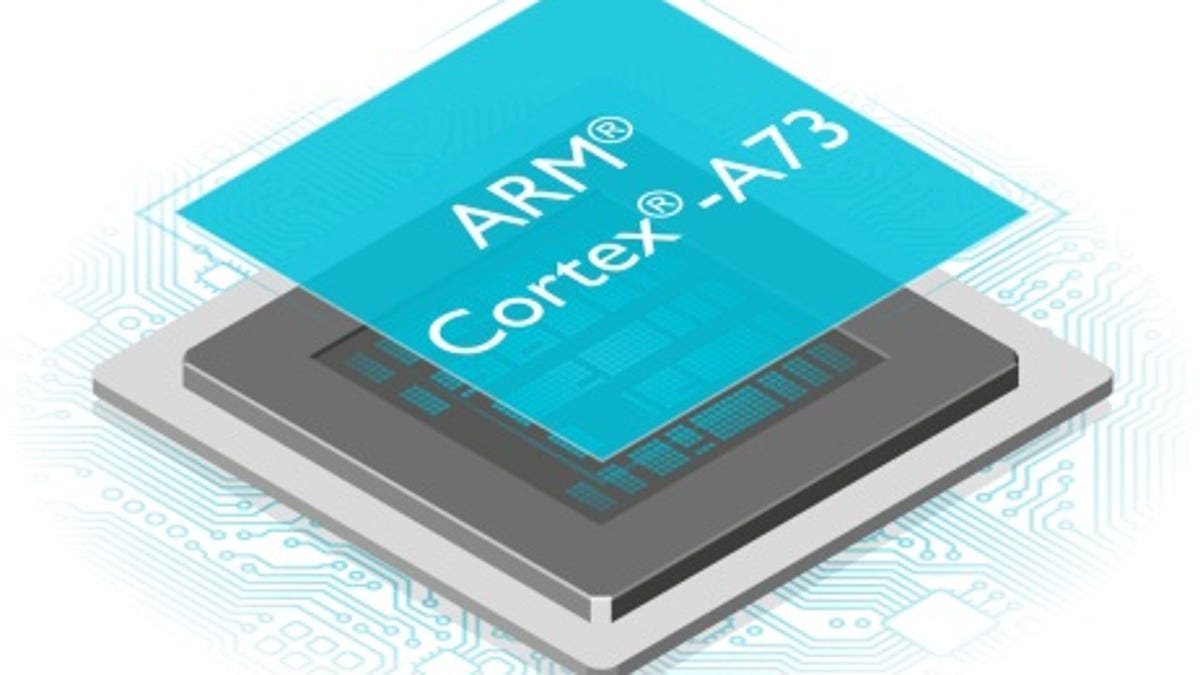Graphics in Samsung's next super phone will look much prettier thanks to this chip
ARM Holdings, whose technology is the basis for Apple and Samsung processors, has created a new CPU and GPU that work better for VR and other intensive tasks.

ARM's new CPU provides up to 30 percent better power efficiency and 30 percent higher performance.
You may think your iPhone or Galaxy device works just fine today. But wait until you see what it could do with new chips coming in 2017.
Think: better battery life (of course), VR-ready graphics, and the ability to run at peak speeds for an entire game without killing your battery. You would even be able to pull 8-megapixel, still photos out of a 4K video you shot (we all know how hard it is to get everyone to look at the camera at the same time). Essentially, you'll be able to do more with your phone for much longer, enabling the spread of new uses like augmented reality and virtual reality.
"If you look at something like virtual reality, it's incredibly demanding on the smartphone," James Bruce, director of mobile solutions for British chip designer ARM Holdings, said in an interview. "The phone is working for an incredibly long time...and must continue to deliver that [high performance] through the entire length of a movie or game."
Soon your phone will be able to handle the more intensive features, all because of new chip architecture from ARM, the Cortex-A73 computing processor and the Mali-G71 graphics processor. ARM is the UK company whose designs are the basis for most of the world's mobile processors, including those made by Apple and Samsung. Today, about 3 billion smartphones use ARM chips, and another 1.5 billion will be sold in 2016, the company said.
Cortex and Mali
The Cortex-A73 chip has been designed to let your phone run at fast speeds all of the time instead of for a short period of time. Compared to its 2016 predecessor, the chip has 30 percent higher performance and 30 percent better power efficiency. It's also much smaller in size than earlier chips.
"If you look at something like [2016's] A72, sustained performance was less than peak performance because we hit the thermal limits of the phone," Bruce said. "On the Cortex-A73 in 10 nanometers, we designed it in such a way the sustained performance and the peak performance are the same."
ARM's new CPU and GPU will make next year's smartphones more powerful and energy efficient.
So far, 10 partners, including HiSilicon, Marvell and MediaTek, have licensed the Cortex-A73. Apple wasn't listed among the initial licensees, but it has used ARM's technology in the past.
The Mali-G71 is based on ARM's new "Bifrost" architecture, which gives 50 percent higher performance than its 2016 predecessor and 20 percent better energy efficiency. It also has some memory improvements that let your phone better process rich images on high-resolution screens, and something called multi-sample anti-aliasing, basically a fancy way of saying it smooths images and gets rid of the pixelation you can see when using VR headsets like the Gear VR.
Ultimately, ARM's focus for the new products is how to increase performance while improving power efficiency, Bruce said. "If we can't do both, we can't deliver the user experiences people expect," he added.
So far, Samsung, HiSilicon and MediaTek have licensed the graphics technology.
The new chips should appear in devices in early 2017.
Check out the rest of CNET's Computex 2016 coverage here.

